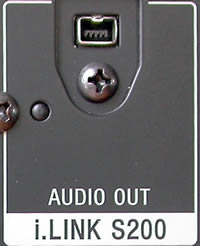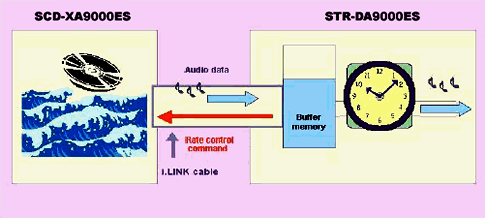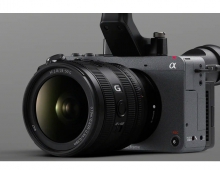Sony SCD-XA9000ES
3. i.LINK Digital Output
Sony SCD-XA9000ES SACD Player - Page 3
i.LINK® Digital Output
From the initial launch of the Super Audio Compact Disc, the 1-bit DSD pulse train was always converted to analog prior to output. While previous Super Audio CD players did include conventional coaxial and optical digital outputs, these outputs handled CD signals exclusively. The SCD-XA9000ES is Sony's first SA-CD player to provide a digital output for the 1-bit DSD signal.

Typical SA-CD reproduction involves numerous D/A and A/D
conversions.
The i.LINK digital connection can simplify the signal path.
This i.LINK digital output is compatible with the i.LINK digital input on Sony's own STR-DA9000ES as well as a growing number of outboard D/A converters from other high-end audio companies. The i.LINK interface maintains the signal in the digital domain and can protect the signal from repeated D/A and A/D conversions. The i.LINK interface also enables a single digital cable to take the place of six analog cables.

i.LINK digital output for Super AudioCD
The i.LINK digital audio interface uses Digital Transmission Content Protection (DTCP), a robust system that protects the music from piracy. The application of the i.LINK (IEEE 1394) interface for Super Audio Compact Disc is clearly different from, and not compatible with, previous i.LINK interface applications for DV camcorders, PC peripherals and professional digital video systems. You can only connect the SCD-XA9000ES i.LINK output to a compatible digital audio input, such as that on the STR-DA9000ES receiver.

The i.LINK output circuit incorporates a dedicated
Large Scale
Integrated circuit (LSI), Sony's CXD3210.
The design of the interface is exceptional because communicating six streams of 2.8224 MHz digital samples raises exceptional challenges. Conveying 1-bit signals at such high data rates and synchronizing the signals with the other component's master clock would normally expose the signal to the time-base errors called jitter. These errors translate directly into time-based distortion of the audio waveform.
The connection from the SCD-XA9000ES to the STR-DA9000ES receiver overcomes this challenge with the High quality digital Audio Transmission System (HATS). HATS uses "command-based rate control of isochronous data flow" to solve the problem. The system incorporates three principal elements.
- Variable-speed transmission from the player
- Buffer memory in the receiver
- Command signals from the receiver to the player, controlling transmission speed
The receiver continually monitors the amount of audio data in its buffer memory. When the buffer memory reaches its lower limit, the receiver commands the player to increase data transmission speed. When the buffer memory reaches its upper limit, the receiver commands the player to decrease transmission speed. And when the buffer memory is between the upper and lower limits, the receiver commands the player to transmit at normal speed.

With Sony HATS, audio data flows from the player to the
receiver's buffer memory, according to rate control commands from the receiver.
Reproduction in the receiver
achieves
the full time base accuracy of the receiver's quartz crystal master clock.
In this way, HATS makes it unnecessary to synchronize a jitter-prone
signal with the receiver master clock. Instead, the buffer memory outputs a
jitter-free signal at the full quartz-crystal accuracy of the receiver's master clock.
You get all the benefits of digital transmission, without exposing the signal to the
potential for jitter-induced distortion.





















